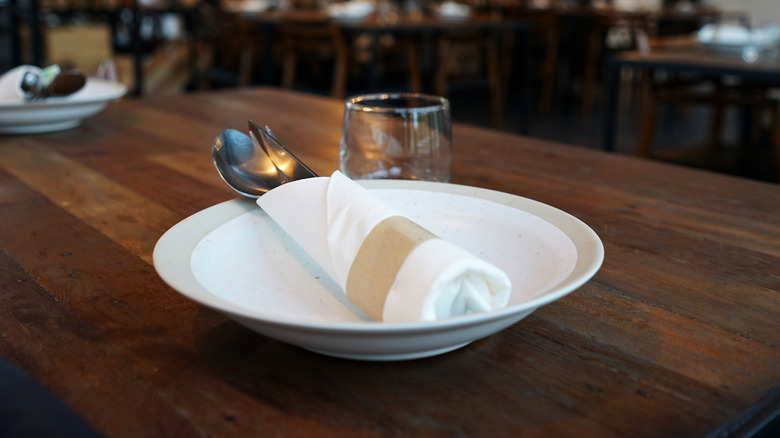Why This Once-Popular Steak Dish Faded From Restaurant Menus
From flavors of pie to soups, dishes from every food category get forgotten in history. Even preparations of meat aren't excluded, as trends regarding cuts and techniques change. For example, take the the Swiss steak, a dish once popular on restaurant menus yet now relegated into obscurity. You won't often see this sauce-soaked slow-cooked meat while dining out.
Despite the name, the dish has nothing to do with the mountainous European country. Instead, the Swiss steak involves beef put through a Swissing machine, thereby cutting a medley of orthogonal indentations into the meat's surface. Subsequent pounding and braising then further gets beef into a terrifically tender state — transformative, as Swiss steak uses cuts from the round or chuck with a typically tough composition. The beef is then served alongside the aromatic tomato sauce used for slow-cooking, and accompanied with a starchy side like potatoes, bread or rice.
With the dish's mouth-watering pairing of rich and tangy flavors (all while keeping the cost down), its disappearance from the mainstream is surprising. After all, the preparation appeared in the U.S. as early as 1915, with the proliferation in cookbooks come the 1920s. Popularity came in following decades: Among troops in the 1940s and with the general public during the 1950s. Yet even a 1961 recipe from James Beard himself couldn't ensure perennial popularity, and the Swiss steak slipped into obscurity.
Economic times intertwine with the Swiss steak's popularity
To understand the Swiss steak's trajectory, it's helpful to dive into the dining trends amidst its surge in the 40s and 50s. At the time, newfound industrialization altered foodways — from the advent of refrigeration, to the proliferation of aluminum foil (which some say helped popularize Swiss steak). Concurrently, Americans were coming off of the economic scarcity of the Great Depression, which then transitioned into rations amidst WWII.
The Swiss steak satisfied diners through such a tumultuous period. It's believed that the dish first took off in 1930s Chicago, then still a prominent meat-packing hub. And the Swissing technique emerged as cubing machines gained patents during the period. This enabled the widespread enjoyment of affordable cuts, right when Americans didn't have the opportunity to spend extra on meats.
It's hard to pinpoint precisely when the Swiss steak's cost-effective allures wore thin. Most likely, it was replaced with access to more luxurious beef cuts, which reached grocery store shelves and steakhouses during the 1960s and 70s. Dining out for the best cuts of steak simply intrigued consumers more, so the Swiss steak got the cut. Nowadays, as food costs stress once again, interest in the dish is reigniting. Although the preparation never fully disappeared from home-cooked repertoires, it might just reappear as a dinner special near you.


